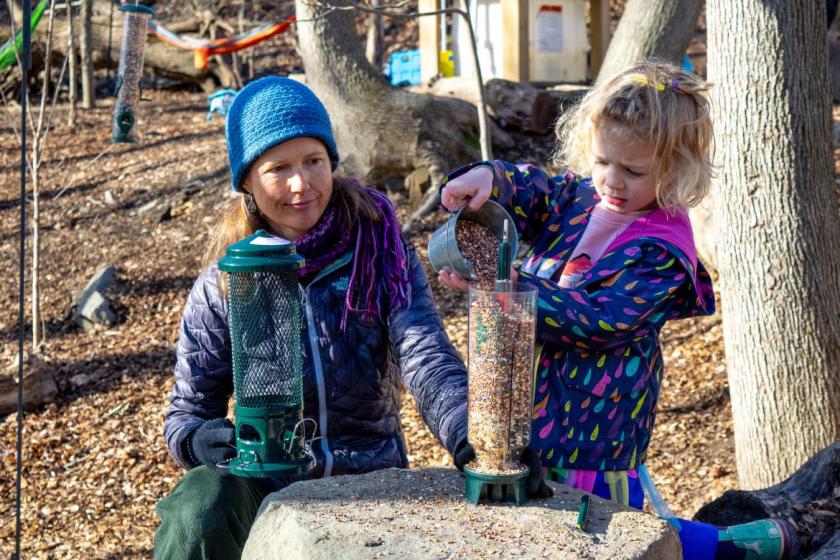Winter Sowing
Interested in starting or adding to your native plant collection? Do you like to save money? Winter sowing is an inexpensive way to accomplish both.
Native perennials are essential to provide food sources for insects including pollinators such as butterflies, moths and both honey bees and native bees. Without the insects, there is little for birds to eat. One nest of baby chickadees will eat over nine thousand insects before they leave the nest! A native oak tree will host over 500 different types of butterfly and moth caterpillars. I am not suggesting you try and winter sow an oak tree but winter sowing native plants will increase the food supply for pollinators and birds. It is a great project for kids especially on a cold winter day. Mid to late December until early February is the best time to do this.
In essence, you are going to create as many mini-terrariums as you have space and desire to propagate. Here is what you need:
Buying seeds costs around three dollars a packet. Buying plants or even plugs adds up very quickly. Getting free seeds from a gardening friend or seed library is even better.
Let's Begin
Make 4-6 small holes in the bottom of the milk jug with the heat gun or sharp knife. Make a cut around the milk jug about half way from the bottom, leaving the top attached to the bottom by a hinge at the handle. You can line the bottom with newspaper or a coffee filter if you want. Fill the bottom half of the jug with about 4 inches of the seed starter mixture. If you have very tiny seeds you may wish to mix them with some sand as you plant them in the seed mixture. Otherwise, just plant the seed like you would normally do, following the depth instructions on the packet but ignoring the distance apart suggestions. Give them a good spritz from a hand-held sprayer. Now close the top half of the jug so it meets the bottom and duct tape it back together again. Voila- your mini- terrarium is done. Wait! Do not forget to label what you put in the jug. I use a sharpie to write right on the jug and since these things will outlive all of us, in subsequent years I cover the writing with more duct tape and describe that year’s planting.
Do NOT replace the caps on the jug. You want air and water to get to your seeds. I know it seems counterintuitive, but put the jugs outside where they receive at least partial sun and leave them there until at least March. If there is a prolonged period with no snow or rain, mist them with the sprayer. You should start to see condensation form in the jugs even in the bitter cold. If algae forms, simply unwrap the jug and expose it to the sun and air and the algae should disappear. Many native plants need a period of stratification to grow and that is exactly what you are providing. In the absence of a gardeners help, seed dormancy is overcome by spending time outside where the hard coat is softened by frost and weathering. This cold period triggers the seed’s embryo and as it grows it can break through the now softened outer part of the seed.
Once your seeds have spouted and the frost-free date approaches, open up the jugs during the day for 2-3 days before transplanting them so they can harden off- acclimate to their soon to be freedom. You can carefully separate each seedling or you can plant them in a hunk and let nature decide who will thrive. You may be surprised at how long and extensive the roots are. This means it worked!
Some good seed choices, many of which can be found in the Marshy point native garden just outside the front entrance, are columbine, bee balm, cardinal flower, ironweed, joe pye weed and Mountain mint. You can also use this method for vegetables but I recommend not starting them until March.
Happy winter gardening!
Carl Gold is a Maryland Master Naturalist and can be reached at cgold@carlgoldlaw.com
**Looking for an education as extraordinary as your child? Inquire today for information on upcoming admission and community events.

